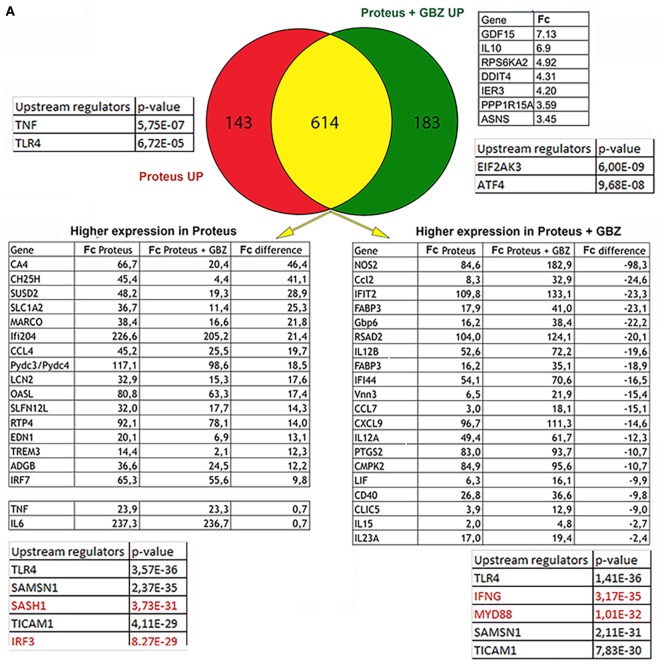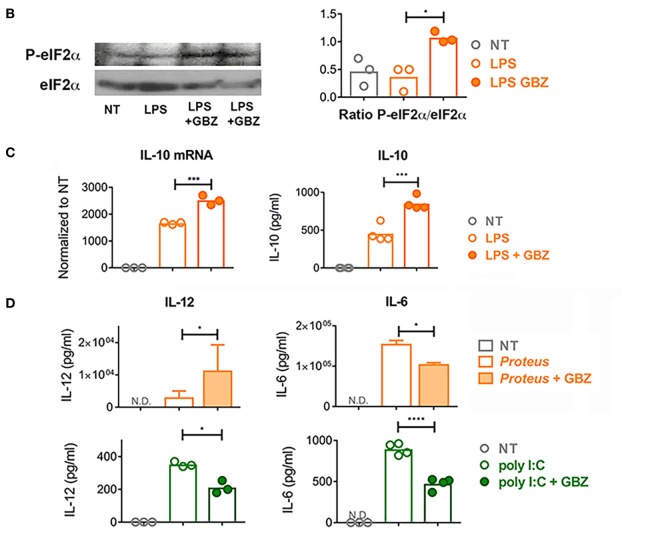Figure 1.
Guanabenz (GBZ) immunomodulatory effect on TLR4 signaling. (A) GM-CSF-derived dendritic cells (DCs) were stimulated for 8 h with Proteus mirabilis (0.1 MOI), in the presence or absence of GBZ (50 µM). Gene expression was established by Affymetrix microarray analysis and compared with the ingenuity pathway analysis (IPA) Ingenuity Pathway software. Venn diagram was used to separate DEGs in three subsets. Tables contain selected DEGs for each subset and displaying the highest difference in expression level compared to control groups. Major upstream regulators identified by IPA are presented for each subset or group. (B) GM-CSF-derived DCs were treated for 6 h with 100 ng/ml lipopolysaccharide (LPS) 055:B5, in the presence or absence of GBZ (50 µM). Protein lysates were blotted for P-eIF2α and total eIF2α. The ratio, calculated in three independent experiments, was plotted. (C) On the same samples, the level of interleukin-10 (IL-10) transcription and secretion was measured by qPCR (n = 3) and ELISA (n = 4) (D). GM-CSF-derived DCs were treated for 8 h with P. mirabilis (0.1 MOI) or 10 µg/ml of poly I:C, with or without GBZ (50 µM). The secretion of IL-12 (n = 3) and IL-6 (n = 4) was measured by ELISA. Statistical significance was assigned using one-way ANOVA test followed by Tukey range test to assess the significance among pairs of conditions (*p < 0.05; ***p < 0.001; ****p < 0.0001).


